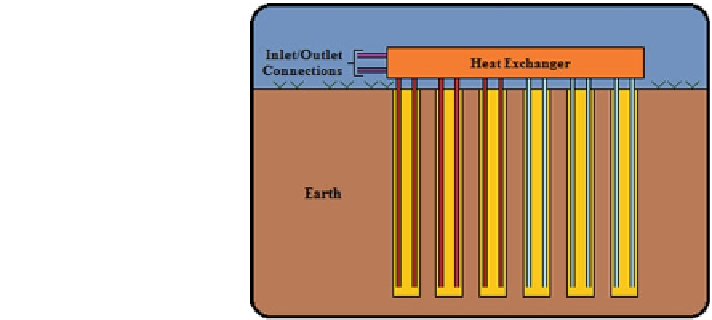Civil Engineering Reference
In-Depth Information
Fig. 8 Schematic
representation of the rock
TES system
4.8 Roof Pond Cool Thermal Energy Storage
In this storage system, the roof structure of the building contains water pond,
which upon natural evaporation can create coolness inside the zones directly
located below the roof of the building. The cooling effect caused by the evapo-
ration of water can be enhanced by forced convection principle or else by filling
the water with small rock-like structures. Due to the capillary action of the rocks,
the water is raised above the surface level of the pond, thereby increasing the
chance of evaporation to occur much better.
The rate of evaporation decides the level of cooling effects experienced inside
the occupied space. Also, the cooling water can be pumped to the zone air-
handling system or underfloor coil elements to provide indirect cooling to the
conditioned spaces. On an average, the roof pond cooling system can achieve
1 kW energy storage/distribution potential per square metre of the pond with the
cooling temperature ranging from 12 to 15 C.
The formation of scales, dirt, fungal and other bactericidal activities may limit
the usage of this system; however, ensuring periodic maintenance can help to
facilitate the effective implementation of this kind of energy storage and distri-
bution system.
4.9 Thermochemical Energy Storage
As explained in the earlier sections, the functional aspects of the thermochemical
and sorption storage systems depend mainly on the rates of reversible chemical
reactions. The reaction kinetics of the chemical components plays a vital role in
absorbing or releasing the heat energy.
The absorption of heat energy in the reactive components takes place during
desorption
(or
dissociation)
process
into
individual
components,
which
is

